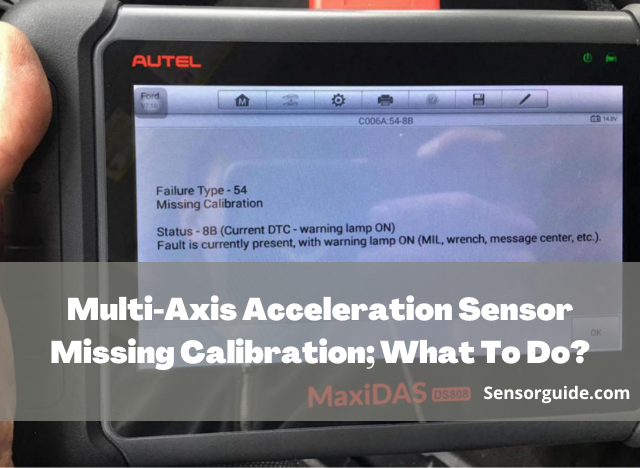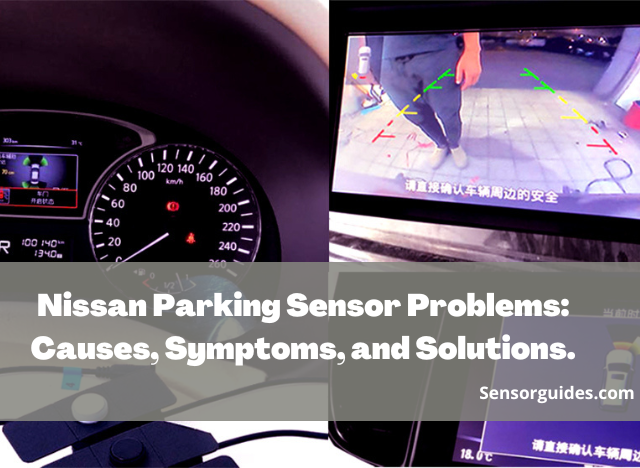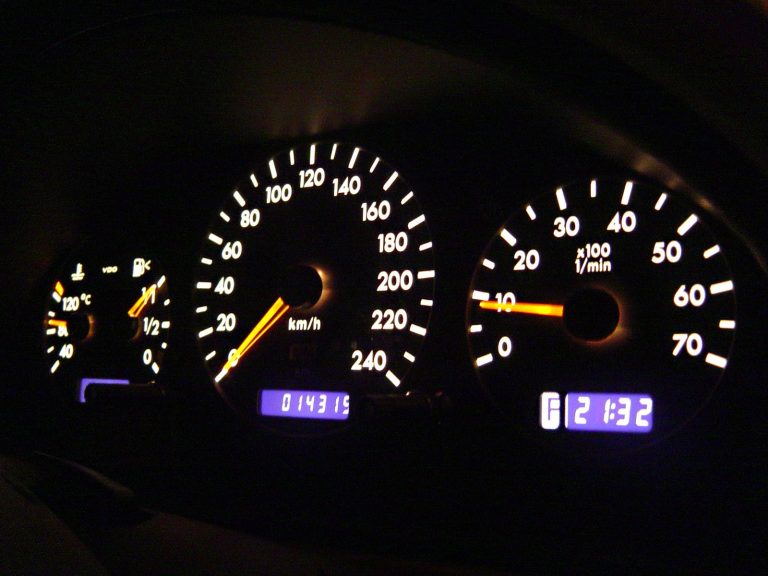B1504: Sunload Sensor Location; Causes, Diagnosing and Troubleshooting
In today’s modern vehicles, technology plays a crucial role in ensuring optimal driving comfort. One such component is the sunload sensor, a key player in Suzuki cars. In this article, we’ll explore the importance of this sensor, its location in your vehicle, and what to do if you encounter the B1504 diagnostic trouble code associated with it. Stay tuned to keep your Suzuki running smoothly!
Table of Contents
What is the B1504 code, and what does it mean?

The B1504 code is a diagnostic trouble code (DTC) in Suzuki vehicles, indicating an issue with the sunload sensor. This sensor is typically situated on the dashboard near the bottom of the windshield and is responsible for measuring incoming sunlight.
It converts this data into an electrical signal sent to the HVAC (Heating, Ventilation, and Air Conditioning) control module, allowing it to adjust climate control settings.
What are the symptoms of B1504 code?
The B1504 code typically relates to the sunload sensor in a vehicle’s climate control system. When this code is triggered, it can manifest through various symptoms, each indicating potential issues with the sensor or related components. Here are common symptoms associated with the B1504 code and their explanations:
Inaccurate Climate Control
One of the primary symptoms is the inaccurate operation of the climate control system. The system may not respond appropriately to changes in sunlight, resulting in uncomfortable temperature settings inside the vehicle. For example, it may not cool down the cabin on a hot, sunny day or may not provide adequate heating on a cold, overcast day.
Inconsistent Fan Speed
The fan speed may fluctuate unexpectedly. It could run too fast or too slow, failing to maintain a consistent airflow as needed for comfort.
Faulty Automatic Headlights
In some vehicles, the sunload sensor also controls automatic headlights. A malfunctioning sunload sensor may lead to improper headlight activation, causing them to turn on or off at inappropriate times.
Climate Control System Malfunctions
The HVAC (Heating, Ventilation, and Air Conditioning) system may not function correctly. This can include issues such as poor cooling or heating performance, improper vent selection, or inability to defrost the windshield effectively.
Illuminated Check Engine Light
The vehicle’s onboard diagnostic system may detect the B1504 code and trigger the check engine light or other warning lights on the dashboard. This serves as an indicator to the driver that there is a problem with the sunload sensor circuit.
Reduced Fuel Efficiency
If the climate control system is not functioning optimally due to the B1504 code, it may use more energy to maintain cabin comfort. This can lead to reduced fuel efficiency over time.
Limited Visibility at Night
As the sunload sensor also contributes to automatic headlight control, a malfunction in this area may affect nighttime visibility. Headlights may not activate when needed, reducing the driver’s ability to see the road clearly.
Erratic Behavior in Different Lighting Conditions
The vehicle’s response to changing lighting conditions may become unpredictable. For instance, the climate control system might act strangely when transitioning from bright sunlight to shade or when entering tunnels.
It’s essential to address these symptoms promptly when the B1504 code is detected. Ignoring them can lead to discomfort, reduced safety, and potential long-term issues with the climate control and lighting systems. Seeking professional diagnostics and repairs by a qualified mechanic is recommended to resolve the underlying problem and restore the vehicle’s proper functionality.
What Is B14A1 Sunload Sensor Circuit Open? Everything You Need to Know
sensor guides
How to fix B1504 code?
Fixing the B1504 code involves diagnosing and addressing issues related to the sunload sensor and its circuitry. Here are four methods to effectively resolve the B1504 code:
Method 1: Visual Inspection and Cleaning
- Visual Inspection:
- Start by visually inspecting the sunload sensor, which is typically located on the dashboard near the windshield. Look for physical damage, dirt, or obstructions on its lens.
- Check the wiring harness connected to the sunload sensor for loose or damaged connections, frayed wires, or signs of corrosion.
- Cleaning the Sensor:
- If the lens of the sunload sensor is dirty, use a soft cloth to gently clean it. Ensure the lens is free from any obstructions that may hinder its ability to collect sunlight effectively.
Method 2: Testing the Sunload Sensor
- Resistance Test:
- Disconnect the electrical connector from the sunload sensor.
- Use a multimeter set to measure resistance (ohms).
- Place the multimeter’s probes on the sensor’s terminals (positive and negative).
- The resistance reading should change as you expose the sensor to varying light levels (e.g., cover and uncover the sensor).
- If the resistance remains constant or infinite, it suggests a faulty sunload sensor that should be replaced.
- Voltage Test:
- Reconnect the electrical connector to the sensor.
- Turn on the vehicle’s ignition (without starting the engine) to provide power.
- Measure the voltage between the sensor’s positive terminal and a known good ground while exposing the sensor to varying light levels.
- Voltage should change as the light levels change.
- If voltage remains constant, it may indicate a defective sensor.
Method 3: Checking Wiring and Connections
- Wiring Inspection:
- Carefully inspect the wiring between the sunload sensor and the HVAC control module for damage, such as cuts, abrasions, or loose connections.
- Repair or replace any damaged wiring or connectors.
Method 4: Replacing the Sunload Sensor
- Replace the Sensor:
- If testing reveals a faulty or damaged sunload sensor that cannot be repaired, replace it with a new one.
- Ensure that the new sensor is properly calibrated according to manufacturer-specific instructions.
- Clear the Trouble Codes:
- Use an OBD-II scanner to clear the B1504 code and any related trouble codes after making the necessary repairs.
- Testing and Final Checks:
- Take the vehicle for a test drive, paying attention to the behavior of the climate control system and automatic headlights as they respond to changing light conditions.
- Recheck for any stored trouble codes with the OBD-II scanner.
These methods should help diagnose and fix the B1504 code. However, if the code persists or you are uncertain about the diagnosis and repairs, you should consult a qualified mechanic or technician for further assistance. They can provide a more in-depth analysis and ensure the issue is resolved.
How to prevent B1504 code?
To prevent the B1504 code and maintain the proper functioning of the sunload sensor, it’s essential to adhere to several key practices. Regular maintenance is crucial; keeping the sunload sensor clean and free from debris ensures it can accurately measure incoming sunlight.
Additionally, conducting periodic inspections of the wiring harness that connects the sensor to the vehicle’s systems is essential. Look for signs of damage, loose connections, or corrosion, and promptly repair or replace any affected wiring.
Avoid placing objects on the dashboard near the sensor that may obstruct its lens. When replacing the sensor, adhere to proper calibration procedures as per the manufacturer’s guidelines.
Finally, addressing any climate control or lighting system issues promptly can prevent secondary problems related to the sensor, ensuring smooth and efficient vehicle operation.
Where Does The Sun Load Sensor Located In Subaru?
sensor guides






